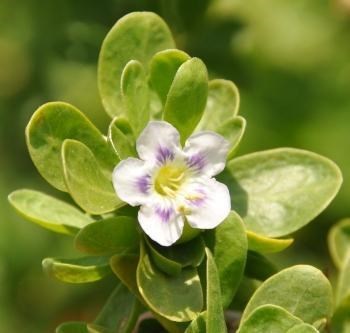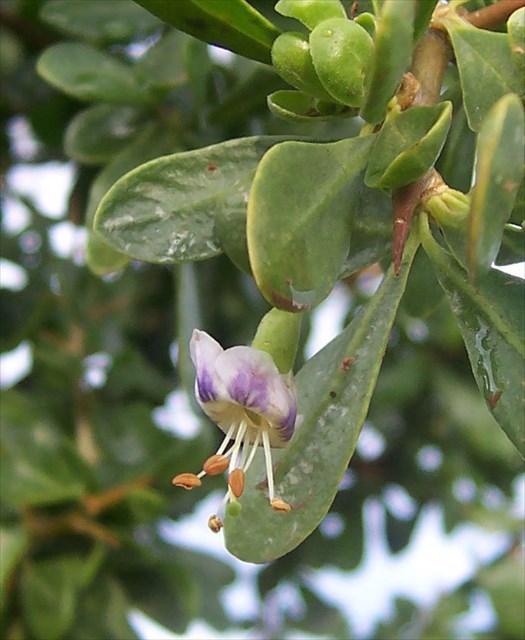M2KB #4: St James Walkway - Ferocious Bush!

This is the 4th of a series of 10 caches on a wonderful coastal walk along the False Bay coast from Muizenberg to Kalk Bay (M2KB) - or vice-versa. The easiest way to do the whole series is to park at or near either station and get the train back from the other end (see train times here).
Otherwise the caches can be done in groups from and back to a convenient starting/parking place, or individually – several as park ‘n’ grabs.
The caches in the series are:
GC82N4H M2KB #1: Bailey's Cottage Short Multi
GC8349F M2KB #2: St James Walkway - Subway
GC8349J M2KB #3: St James Walkway - The Spring
GC8349J M2KB #4: St James Walkway - Ferocious Bush
GC8349K M2KB #5: St James Beach Short Multi
GC8349M M2KB #6: Danger Beach
GC8349Q M2KB #7: Metro and Mussels
GC8349V M2KB #8: Dalebrook Short Multi
GC8349W M2KB #9: The Old Tea Room?!
GC8349Z M2KB #10: Kalk Bay Short Multi
 The cache, a small camo-taped tablet pot, is hidden under this attractive vigorous low and sprawling berry-strewn bush alongside the walkway as it nears its southern endpoint at St James Tidal Pool with its famous and distinctive brightly coloured bathing huts. For more information on the walkway including useful tips and links, see GC8349F M2KB #2: St James Walkway - Subway.
The cache, a small camo-taped tablet pot, is hidden under this attractive vigorous low and sprawling berry-strewn bush alongside the walkway as it nears its southern endpoint at St James Tidal Pool with its famous and distinctive brightly coloured bathing huts. For more information on the walkway including useful tips and links, see GC8349F M2KB #2: St James Walkway - Subway.
To reach the cache location: a) By road: park at the Surfer’s Corner parking area, anywhere conveniently close to the start of the walkway which is @ S 34 6.599 E 18 28.078. Then follow the walkway south to the cache location passing the location of GC82N4H M2KB #1: Bailey's Cottage Short Multi, GC8349F M2KB #2: St James Walkway - Subway and GC8349J M2KB #3: St James Walkway - The Spring along the way.
b) By rail: take the train to Muizenberg Station, exit the station on the seaward side @ S 34 6.568 E 18 28.087 either directly or via the subway (depending on the direction of arrival) into the Surfer’s Corner parking area then continue as above.
c) If doing individually: (from the north) park in the lay-by on the main road (M4) @ S 34 6.977 E 18 27.708 then make your way the short distance south to the walk way subway passing under the railway to the walkway and then proceed some 200m south to the cache location.
(from the south) park in the car park adjacent to St James Station @ or near S 34 7.162 E 18 27.488, then make your way via the nearby subway onto St James Beach. Turn left (north), walk past the bathing huts and tidal pool and on to the cache location.

The African or Cape Boxthorn, honey thorn, or snake-berry (Lycium ferocissimum) is a shrub in the nightshade family (Solanaceae) which is native to Cape Province and Orange Free State and has become naturalised in Australia and New Zealand where it was introduced as a hedge or barrier plant. It is listed in Australia's Weed of National Significance list and is a declared noxious weed in the United States.
It is a large, erect, woody, spiny, evergreen shrub which grows up to 2–3 m tall and spreads about 3m wide. The oval leaves 10–40mm long and 4–10mm wide. This is an erect, woody and large shrub, which grows It has an extensive root system that is composed of small roots that spread laterally from the plant, but are generally not deep. The branches are drooping and spread widely. Solitary (sometimes pairs of) fragrant pale-lilac flowers emerge from the leaf axils.
It bears attractive red berries sporadically throughout the year which make it attractive to birds. Hence its popularity as a (larger) garden plant.
The main stems have strong and thick spines up to 150 mm long.

It was first formally described in 1854 by British botanist John Miers in the Annals and Magazine of Natural History. His description was based on samples collected from Uitenhage. It is 1 of 21 species of Lycium occuring in South Africa. This word comes from the Greek word lykion, the name of a thorny tree with juice and roots used medicinally, from Lycia, a southwest region of Asia Minor. The species name is derived from the Latin words ferocissimum ‘most ferocious’ - probably due to its robust, long-lived and ‘ferocious’ spines which protect it from grazing by herbivores and make it an excellent hedging/barrier plant.
Most nightshade family species are self-pollinating, but also attract insects and ants. The berries of L. ferocissimum are eaten by birds and small animals and seeds dispersed in their droppings.
It tolerates drought, salt spray and sand blasting making it an ideal plant for coastal areas. It also tolerates a wide range of climates and soil types.
Uses: medicinally, it was used by the Xhosa as a tonic to cure cattle ailments, such as poor appetite and abscesses. They also used the root in lukewarm water to treat swollen legs.
Leaves are nibbled off by grazing goats and in the wild it is provides shelter for native animals.
The berries are edible, but produce narcotic symptoms.
When pruned and kept under control, it makes a pleasant ornamental shrub, as well as a windbreak. Pruning encourages the plant to spread.